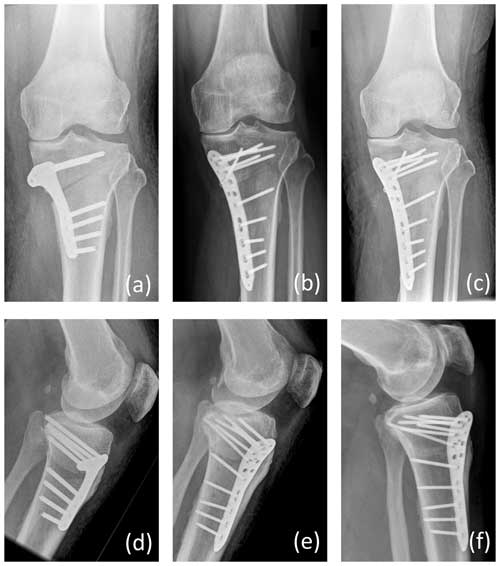Alt, V.: Antimicrobial coated implants in trauma and orthopaedics-A clinical review and risk-benefit analysis, Injury, 48, 599–607, https://doi.org/10.1016/j.injury.2016.12.011, 2017.
Alt, V.: Treatment of an infected nonunion with additional fresh fracture of the femur with a silver-coated intramedullary nail: A case report, Trauma Case Rep., 39, 100641, https://doi.org/10.1016/j.tcr.2022.100641, 2022.
Anagnostakos, K., Mosser, P., and Kohn, D.: Infections after high tibial osteotomy, Knee Surg. Sports Traumatol. Arthrosc., 21, 161–169, https://doi.org/10.1007/s00167-012-2084-5, 2013.
Arens, D., Zeiter, S., Nehrbass, D., Ranjan, N., Paulin, T., and Alt, V.: Antimicrobial silver-coating for locking plates shows uneventful osteotomy healing and good biocompatibility results of an experimental study in rabbits, Injury, 51, 830–839, https://doi.org/10.1016/j.injury.2020.02.115, 2020.
Burchard, R., Katerla, D., Hammer, M., Pahlkötter, A., Soost, C., Dietrich, G., Ohrndorf, A., Richter, W., Lengsfeld, M., Christ, H. J., Graw, J. A., and Fritzen, C. P.: Intramedullary nailing in opening wedge high tibial osteotomy-in vitro test for validation of a method of fixation, Int. Orthop., 42, 1835–1843, https://doi.org/10.1007/s00264-018-3790-5, 2018.
Donlan, R. M. and Costerton, J. W.: Biofilms: survival mechanisms of clinically relevant microorganisms, Clin. Microbiol. Rev., 15, 167–193, https://doi.org/10.1128/cmr.15.2.167-193.2002, 2002.
Fiore, M., Sambri, A., Zucchini, R., Giannini, C., Donati, D. M., and De Paolis, M.: Silver-coated megaprosthesis in prevention and treatment of peri-prosthetic infections: a systematic review and meta-analysis about efficacy and toxicity in primary and revision surgery, Eur. J. Orthop. Surg. Traumatol., 31, 201–220, https://doi.org/10.1007/s00590-020-02779-z, 2021.
Han, S. B., In, Y., Oh, K. J., Song, K. Y., Yun, S. T., and Jang, K. M.: Complications Associated With Medial Opening-Wedge High Tibial Osteotomy Using a Locking Plate: A Multicenter Study, J. Arthroplasty, 34, 439–445, https://doi.org/10.1016/j.arth.2018.11.009, 2019.
Jia, G., Sun, C., Xie, J., Li, J., Liu, S., Dong, W., and Yu, X.: Incidence and risk factors for surgical site infection after medial opening-wedge high tibial osteotomy using a locking T-shape plate, Int. Wound J., 20, 2563–2570, https://doi.org/10.1111/iwj.14124, 2023.
Kuehl, R., Brunetto, P. S., Woischnig, A. K., Varisco, M., Rajacic, Z., Vosbeck, J., Terracciano, L., Fromm, K. M., and Khanna, N.: Preventing Implant-Associated Infections by Silver Coating, Antimicrob Agents Chemother, 60, 2467–2475, https://doi.org/10.1128/aac.02934-15, 2016.
Pinto, R. M., Soares, F. A., Reis, S., Nunes, C., and Van Dijck, P.: Innovative Strategies Toward the Disassembly of the EPS Matrix in Bacterial Biofilms, Front. Microbiol., 11, 952, https://doi.org/10.3389/fmicb.2020.00952, 2020.
Schoder, S., Lafuente, M., and Alt, V.: Silver-coated versus uncoated locking plates in subjects with fractures of the distal tibia: a randomized, subject and observer-blinded, multi-center non-inferiority study, Trials, 23, 968, https://doi.org/10.1186/s13063-022-06919-0, 2022.
Zajonz, D., Birke, U., Ghanem, M., Prietzel, T., Josten, C., Roth, A., and Fakler, J. K. M.: Silver-coated modular Megaendoprostheses in salvage revision arthroplasty after periimplant infection with extensive bone loss – a pilot study of 34 patients, BMC Musculoskelet. Disord., 18, 383, https://doi.org/10.1186/s12891-017-1742-7, 2017.





